What makes a pretty face?
Animals — including people — are innately drawn to beauty, which may be defined by symmetry or health
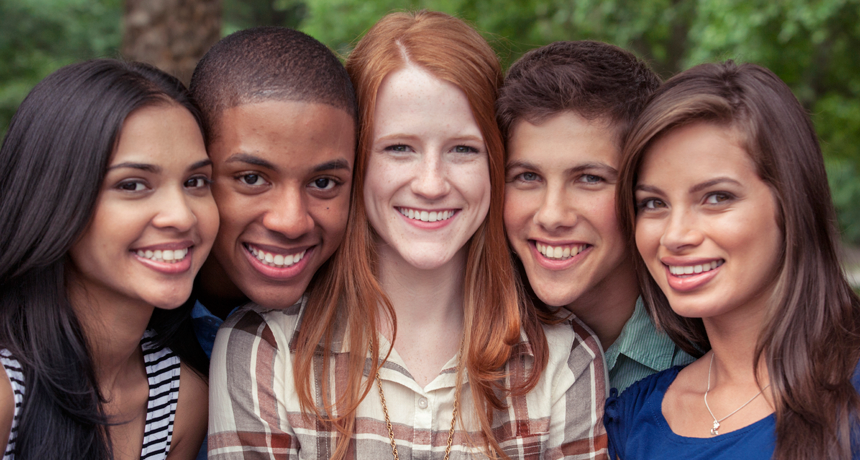
They say that beauty is in the eye of the beholder. But what aspects make someone gorgeous? Science has turned up some answers.
XiXinXing/iStockphoto
We all know we shouldn’t judge people based on their looks. Beauty is only skin-deep, as the saying goes. Moreover, someone’s appearance doesn’t tell us anything about how kind they are. Or how dependable. Or anything else about their personality.
But it’s hard to ignore the way a person looks. Something about attractive people makes us want to watch them. We can’t take our eyes off a good-looking actor, actress or model. As such, beauty has power over us. But what is beauty?
There is no simple answer. Researchers have, however, begun probing how beauty affects the behavior of humans and other animals. Through this work, especially, they have discovered some of the features that make an individual attractive to others.
Scientists are also learning that there may be a practical side to our obsession with beauty. A pretty face may belong to a healthier person. Or it may simply be easier for our brains to process.
All about averages
Looking at a set of photos, it’s easy to say which faces we find attractive. Different people will usually agree on which faces those are. But few can say precisely why those faces seem so beautiful.
Researchers have begun turning up some answers, though. Such as symmetry. Faces that we deem attractive tend to be symmetrical, they find. Attractive faces also are average.
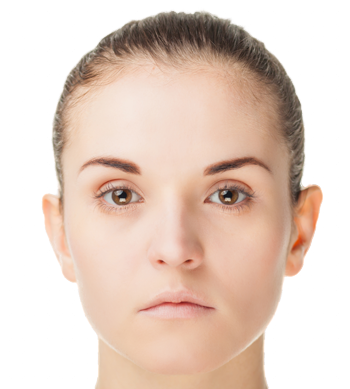
In a symmetrical face, the left and right sides look like each other. They’re not perfect mirror images. But our eyes read faces with similar proportions on both sides as symmetrical.
“People’s faces usually only differ subtly in symmetry,” says Anthony Little. He is a psychologist at the University of Stirling in Scotland. Everyone’s face is slightly asymmetrical, but in different ways, he says. In the end, many of these faces seem symmetrical. “So,” he explains, “symmetry looks normal to us. And we then like it.”
This averageness, Little points out, refers to how similar a face looks to most other faces in a population. Average, here, does not mean “so-so.” Rather, average faces are a mathematical average (or mean) of most people’s features. And, in general, people find such faces quite attractive.
“Averageness includes all kinds of factors,” says Little. “Such as the size of the features of your face and their arrangement.”
For example, the distance between the centers of a woman’s eyes affects whether she is considered beautiful. People find her most attractive when that distance is just under half of the width of the face. Researchers at the University of California, San Diego and the University of Toronto in Canada discovered that ratio. Just as important, they found, is the distance between a woman’s eyes and mouth. It should be just over one-third the height of her face. Both those distances match the population average, or are close to it.
Nature or nurture?
Are we born with a preference for certain kinds of faces? Or is it just something that people learn, without realizing it? To find out, psychologist Judith Langlois and her team at the University of Texas in Austin worked with young children and babies.
Some of their young recruits were just two to three months old. The researchers showed each baby photos of two faces. One face was more attractive than the other. The scientists then recorded how long the infants looked at each face.
Babies spent longer viewing the attractive faces than the unattractive ones. That meant they preferred the pretty faces, says psychologist Stevie Schein. She works with Langlois. These findings suggest that people prefer pretty faces very early in life. However, it’s still possible that we learn that preference. After all, Schein points out, “By the time we test infants, they already have experience with faces.”
That experience can make a difference. Research conducted at the University of Delaware found that babies’ brains are better at processing faces from their own race. So infants quickly come to prefer these faces, Schein says.
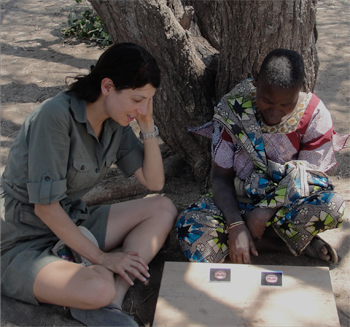
It’s well-known in psychology that familiar things are more attractive, says Coren Apicella. She is a psychologist at the University of Pennsylvania in Philadelphia. “Perhaps average faces are more attractive because they seem more familiar.”
Indeed, her research backs this up. Apicella and Little worked with two groups of young adults: British and Hadza. The Hadza are hunter-gatherers in Tanzania, a nation in East Africa. Apicella chose them for her experiment because they had not been exposed to Western culture and standards of beauty.
She showed people from both groups two images and asked which was more attractive. One image was an average of five British faces or five Hadza faces. The other was an average of 20 British faces or 20 Hadza faces. People of both cultures preferred the face that was more average — that is, compiled from 20 faces instead of five. The British participants found both Hadza and British faces beautiful. The Hadza, in contrast, preferred only Hadza faces.
“The Hadza have little experience with European faces and probably do not know what an average European face looks like,” Apicella concludes. “If they don’t know what it looks like, how can they prefer it?”
Her findings show how biology and the environment work together to shape our values. “The preference for averageness itself is biologically based,” Apicella says. But people must first experience other faces to learn what an average face should look like.
A newer study by Kaitlin Ryan and Isabel Gauthier shows how important exposure to faces can be. These researchers at Vanderbilt University in Nashville, Tenn., found this to be true — even when those faces aren’t human.
The pair asked 297 young adults to view pictures of men, women, Barbie dolls and Transformer (toy) faces. Women are usually better at recognizing faces than are men. But men who had played with Transformer toys as kids were better than women at identifying Transformer faces. That childhood exposure to Transformers stuck with the men, improving their performance, they report in the December 2016 Vision Research.
Story continues below image.
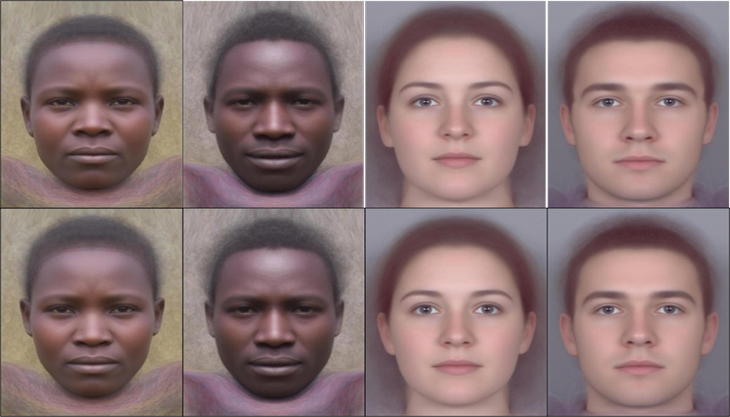
Not just people
Research shows that people with more symmetrical faces don’t just look nice. They also tend to be healthier than asymmetrical people. Genes provide the instructions for how a cell is to perform. All people have the same number of genes. But people with more average faces tend to have a greater diversity in the genes they are born with. And that, research has shown, can lead to a stronger immune system and better health.
Scientists have found similar links between “beauty” and health in other animals too. For example, Molly Morris found that young female swordtail fish prefer symmetrical males. Morris is a behavioral ecologist at Ohio University in Athens. (A behavioral ecologist studies the evolutionary basis of animal behaviors.)
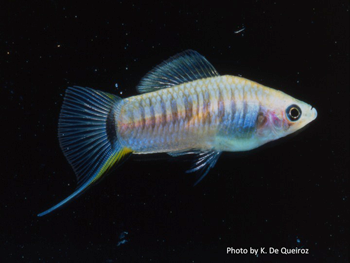
Swordtail fish have dark vertical bars on their sides. Small, young females prefer males with the same number of bars on both sides, Morris says. That love of symmetry matches findings in other species, including zebra finches and lizards, she notes.
But the symmetry rule has some limits — at least in the fish that Morris studies. Larger, older swordtail females prefer asymmetrical males. Morris wondered if this might have to do with how the males had grown. So she and her team tested fish. They fed some males high-quality food and others low-quality food. Certain males grew faster on high-quality food. And those fast-growing males ended up with uneven bars on their sides.
Asymmetry may show that a male has put his energy into rapid growth, Morris says. “In some situations, this can be a good strategy,” she points out. For example, a fish living near lots of predators would be more likely to survive if it grew faster. It would also be better off if it could grow even when food is scarce. So females that live in one of these types of environments should prefer asymmetrical males, Morris explains. Those males would carry the best genes for their environment, and would later pass them on to their young.
Research on birds also shows that female birds prefer good-looking guys. For example, among satin bowerbirds, females prefer males whose feathers reflect more ultraviolet (UV) light. Researchers at Auburn University in Alabama caught male bowerbirds and took blood samples. Males with blood parasites had feathers reflecting less UV light than healthy males. So when females chose males with UV-rich plumage, they weren’t just being shallow. They were using that information to find healthy males to father their young.
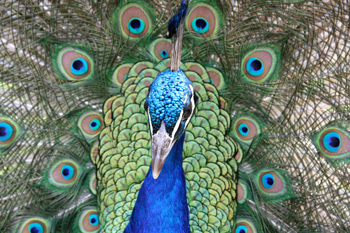
Adeline Loyau is a behavioral ecologist who has seen similar things in peacocks. She works at the Helmholtz Center for Environmental Research in Leipzig, Germany. Back when she was working for a government research agency in France, she began studying the birds’ eyespots. These are the vivid circles at the ends of their tail feathers. She knew peahens prefer males with more eyespots. They also prefer males that show off their tails more. Her work has now shown that healthier peacocks have more eyespots in their tails. These birds also splay their flashy tails more frequently to the females.
Loyau then gave some males an injection that made their immune systems leap into action. It was as if they were sick. Afterward, she recorded the birds’ behavior. These peacocks displayed their tails less than the healthy guys did. But that was only true if they had fewer eyespots. Males with more eyespots didn’t seem affected by the shot. So a peacock’s beauty tells females he’s healthy, Loyau says.
Females are better off avoiding sick mates, she explains. If they didn’t, they might catch some disease. A female bird, she adds, also looks for good genes in the guy who will father her young. Paying attention to a male’s appearance and behavior can help her gauge which guys have the right stuff.
Credit: Paul Dinning/YouTube
Easy on the brain
Maybe we’re born with a preference for averageness because it tells us something about other people. For example, it may help us find healthy mates. Or perhaps people like average, pretty faces simply because they’re easier on our brains.
Langlois and her team in Texas studied this question using a technique called EEG. That’s short for electroencephalography (Ee-LEK-troh-en-SEFF-uh-LAAG-rah-fee). EEGs measure electrical activity in the brain using a net of small electrodes placed on the outside of the head.
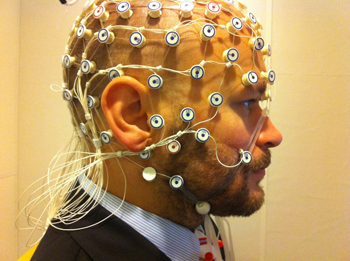
The scientists recruited college students for their brain study. Each student looked at a series of faces while wearing the electrode net. Human faces fell into one of three groups: highly attractive, unattractive or digitally morphed images that combined many features into an average face. Some chimpanzee faces were put in the mix too. The EEG recorded brain activity as each student viewed the pictures.
The researchers then searched the EEGs for patterns of electrical activity. Those patterns offered signs of what the brain was doing. The students’ brains processed human faces faster than chimpanzee faces, the EEGs showed. That makes sense, the researchers now say, because people are more familiar with human faces. They look normal to us, so we don’t have to spend much time thinking about them.
The team also found that brains processed very attractive faces faster than unattractive ones. And they processed average faces even faster. That means their subjects’ brains found averaged faces easiest to handle. Subjects also rated the averaged faces as most attractive.
The beauty bias
In sum, looks may go far more than skin deep after all. They also can affect how people interact.
Scientists discovered long ago that people show favor to those with a pretty face. Attractive people are more likely to get jobs. They make more money than their less attractive coworkers. We even tend to think attractive people are smarter and friendlier than less attractive people.
Langlois and Angela Griffin (then at the University of Texas) looked for more signs of this “beauty is good” stereotype. And they found it.
The researchers asked people to rate photos of young women’s faces on a five-point scale. The scientists then chose the six photos with the lowest ratings and six with the highest. They chose another six photos that had ratings closest to the average (or mean) score. This set made up their group of “medium”-attractive faces.
Nearly 300 college students were asked to view photos in a random order from the three image sets for 4 seconds each. After each quick view, the students had to answer a question about the person in that last picture. For example, how likely was she to be popular, friendly, helpful, kind or smart?
Both men and women ranked people with unattractive faces as less intelligent, less sociable and less likely to help others. Medium attractive people got similar rankings to highly attractive people for everything except sociability.
Griffin and Langlois then repeated the experiment with children aged seven to nine. They got the same results.
Maybe the stereotype isn’t exactly “beauty is good,” the researchers suggest. Maybe it’s more like “ugly is bad.” They suspect this may be because unattractive faces look less like a “normal” or average face.
It can be hard to stop ourselves from stereotyping others. “Appearance is the first thing we judge people on,” says Little. Still, he says, “Being aware that these biases exist is an important step.” For example, he points out, attractive people aren’t actually smarter. “As we get to know people, physical appearance gets less important,” he says.
Schein agrees. “Knowing that the bias exists, acknowledging that we all carry it with us, and taking steps to consciously decrease your own bias are important,” she says. That can keep us from discriminating against people who are unattractive — or simply uneven.







